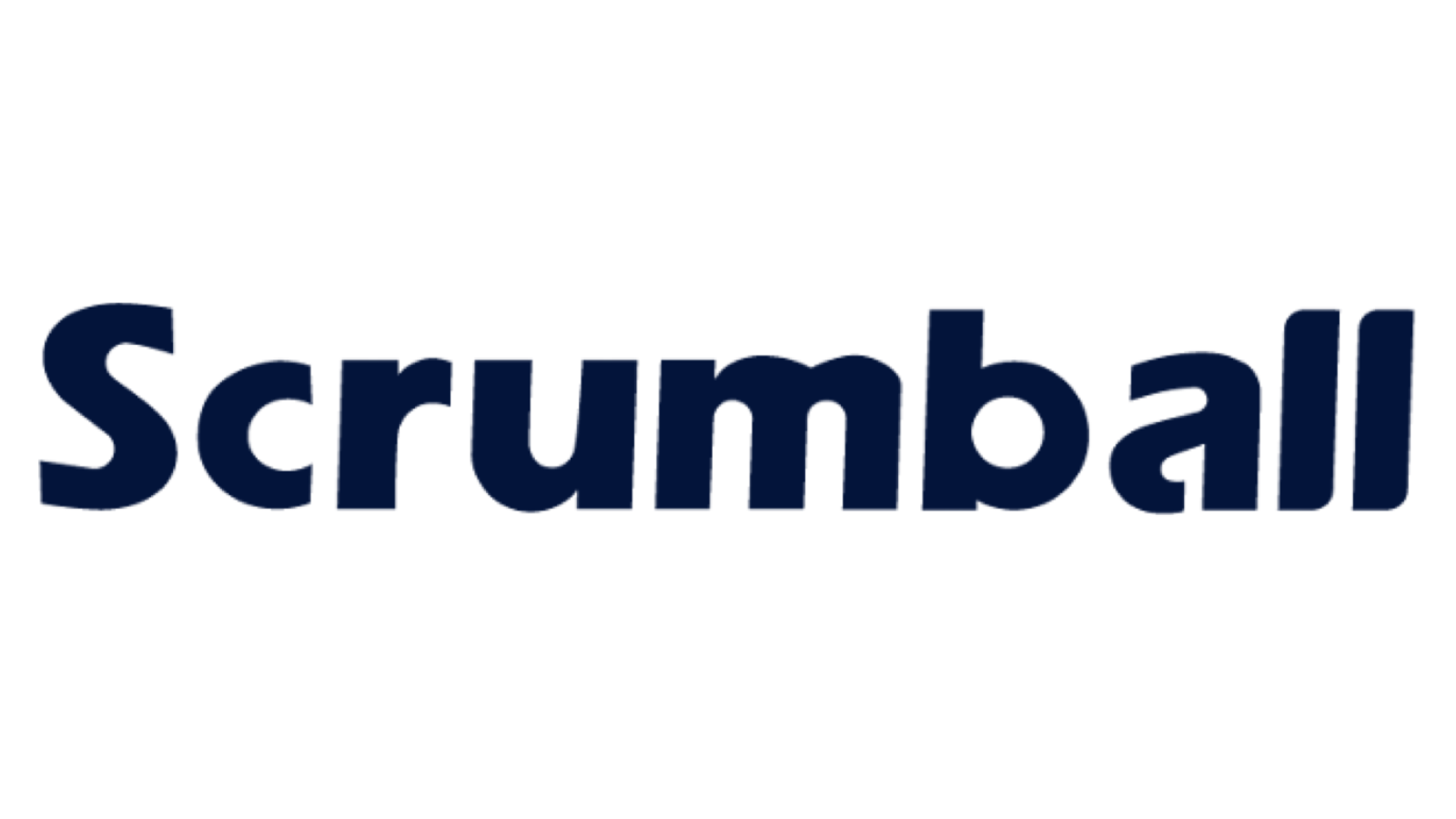7 Tips to Choose the Perfect Email Marketing Software for Your Business

Choosing the right email marketing software can transform how you connect with your audience. It’s not just about sending emails; it’s about streamlining your workflow and maximizing your results. The right tool automates repetitive tasks, saving you hours that you’d otherwise spend on manual processes. You’ll have more time to focus on strategy and creativity.
An all-in-one email campaign management software keeps everything organized. You can create, send, and track campaigns in one place. This simplicity boosts efficiency and reduces the hassle of juggling multiple tools. Plus, when the software is user-friendly, your team spends less time learning and more time delivering results.
Define Your Business Needs
Identify Your Email Marketing Goals
Before diving into email marketing software, take a moment to define your goals. What do you want to achieve with your email marketing campaigns? Are you looking to send newsletters, promote products, or automate customer follow-ups? Each purpose requires specific features, so knowing your objectives helps you pick the right email marketing software.
Here are some common goals businesses like yours often focus on:
- Driving engagement through targeted email campaigns.
- Nurturing leads to convert them into loyal customers.
- Retaining customers, as repeat buyers tend to spend more.
- Generating revenue by guiding recipients through the sales funnel.
Once you’ve outlined your goals, match them with the features offered by the email marketing platform. For example, if you want to automate emails, look for tools with workflows and autoresponders. If your focus is on engagement, choose software with personalization and segmentation options. Aligning your goals with the platform’s capabilities ensures you get the most out of your investment.
Understand Your Audience and Team
Your audience size and team’s expertise play a big role in choosing the right email marketing software. Start by considering how many people you’ll be emailing. Are you targeting a small, niche group or a growing list of thousands? Also, think about future growth. If your audience expands, you’ll need software that scales with you.
Next, evaluate your team’s skill level. If your team is new to email marketing, go for a user-friendly tool with drag-and-drop editors and pre-designed templates. On the other hand, if you have experienced marketers, advanced features like custom coding or detailed analytics might be more suitable.
Keep in mind some common challenges businesses face when selecting email marketing software:
| Challenge | Description |
|---|---|
| Cost considerations | Businesses must evaluate pricing options, especially free versions, to ensure they meet current and future needs. |
| Defining must-have features | It's crucial to list requirements by importance and research platforms that can fulfill these needs. |
| Email deliverability | High deliverability rates are essential to ensure emails reach inboxes rather than spam folders. |
| Reliable customer support | Access to responsive customer service is vital for troubleshooting and maximizing software capabilities. |
By understanding your audience and team, you’ll make a more informed decision and avoid unnecessary headaches later.
Prioritize Usability and Simplicity
Look for User-Friendly Features
When choosing email marketing software, ease of use should be at the top of your list. A tool with an intuitive interface makes your work faster and less frustrating. You don’t want to waste time figuring out how to navigate the platform. Instead, you should focus on creating impactful email marketing campaigns.
Test the drag-and-drop editor or email builder before committing to any software. These features let you design emails quickly, even if you’re not a tech expert. You can add images, text, and buttons with just a few clicks. It’s like building a puzzle—simple and satisfying. A user-friendly platform ensures you spend more time crafting your message and less time wrestling with the tool.
Ensure Mobile Accessibility
In today’s fast-paced world, you need email marketing software that works wherever you are. A mobile-friendly platform lets you manage your email marketing campaign on the go. Whether you’re commuting or attending a meeting, you can check performance, schedule emails, or make quick edits from your phone.
Responsive email templates are another must-have. Your audience reads emails on various devices, from smartphones to tablets. If your emails don’t look good on smaller screens, you risk losing their attention. Always verify that the software offers templates that adapt seamlessly to different devices. This ensures your email marketing campaigns look professional and engaging, no matter where they’re viewed.
Tip: Test the platform on your phone before making a decision. A quick trial can save you from future headaches.
Evaluate Features and Functionality

Automation and Personalization
Automation is a game-changer in email marketing. It saves you time and ensures your audience gets the right message at the right moment. Look for email automation options like workflows, autoresponders, and drip campaigns. These features let you send emails triggered by specific actions, such as signing up for a newsletter or making a purchase. For example, drip campaigns can nurture leads by sending a series of emails over time, keeping your brand top of mind.
Personalization takes your email marketing campaigns to the next level. By segmenting your audience based on demographics or behavior, you can deliver content that feels tailor-made. This approach boosts engagement and conversion rates. Imagine sending a special discount to customers who haven’t shopped in a while—it’s a simple way to re-engage them. Advanced segmentation tools in the right email marketing software make this process seamless.
Pro Tip: Use dynamic content to personalize emails further. It allows you to display different content blocks based on the recipient’s preferences or actions.
Analytics and Testing
Tracking performance is essential for improving your email marketing campaigns. The best email marketing software offers detailed analytics, helping you monitor key email marketing metrics like open rates, click-through rates, and conversions. These insights show what’s working and where you can improve.
A/B testing is another must-have feature. It lets you test different elements of your emails, such as subject lines or call-to-action buttons. Even small tweaks can lead to big results. For instance, Campaign Monitor reported a 127% increase in click-through rates by testing email variations. With A/B testing, you can optimize your campaigns for maximum impact.
Note: Don’t forget to track unsubscribe rates and email deliverability. These metrics help you maintain a healthy email list and avoid spam filters.
Response Handling
Managing replies and interactions is just as important as sending emails. Some email automation options include tools to handle responses effectively. These features let you organize replies, track follow-ups, and even automate responses to common queries.
For example, autoresponders can send instant replies to customer inquiries, ensuring they feel valued. This quick response builds trust and keeps your audience engaged. If your email marketing software integrates with your CRM, you can take it a step further by syncing customer interactions across platforms.
Tip: Choose software that simplifies response management. It saves you time and ensures no message slips through the cracks.
Check Integration Capabilities
Compatibility with Existing Tools
Your email marketing software should work well with the tools you already use. This ensures a smooth workflow and saves you from switching between platforms. Look for software that integrates seamlessly with your CRM or e-commerce tools. This connection helps you manage customer data, track interactions, and create more personalized campaigns.
Some popular CRM tools that integrate effortlessly with email marketing platforms include:
- HubSpot CRM: A robust option with email integration and a free plan packed with features.
- ActiveCampaign: Known for its powerful automation, it also offers CRM features as an add-on.
- EngageBay: A budget-friendly choice with strong email marketing capabilities and a simple interface.
If your business has unique needs, check if the platform offers API access. This allows you to create custom integrations tailored to your workflow. With the right setup, you can streamline your processes and focus on growing your business.
Tip: Before committing, test the integration with your existing tools to ensure everything works as expected.
Social Media and Third-Party Apps
Social media integration is a game-changer for your email marketing strategy. It expands your reach and boosts brand visibility by tapping into social media’s massive user base. You can also enhance engagement by using interactive features like polls or comments to spark conversations. Plus, social media insights help you create more targeted email campaigns.
Here’s how integrating with social media platforms benefits your business:
- Increases content distribution, ensuring your emails reach a wider audience through social sharing.
- Improves personalization by using social media data to craft tailored messages.
- Optimizes SEO by driving traffic and improving online visibility.
Additionally, check if the software works with third-party apps like Zapier. These tools connect multiple platforms, automating repetitive tasks and saving you time. For example, you can set up a workflow where new social media followers automatically receive a welcome email. This keeps your audience engaged without extra effort.
Pro Tip: Choose software that supports both social media and third-party app integrations. It gives you more flexibility and helps you stay ahead of the competition.
Assess Pricing and Value
Compare Costs and Features
When choosing email marketing software, pricing is a big factor. You want a tool that fits your budget without sacrificing essential features. Start by looking for platforms with transparent pricing plans. Many providers offer free trials or free plans, which let you test the software before committing. This way, you can explore the features and see if they align with your needs.
Here’s a quick breakdown of average costs for popular email marketing software:
| Plan Type | Average Price | Common Features |
|---|---|---|
| Free Plan | $0 | Basic email templates, limited automation, and basic reporting. |
| Personal Plan | $10-$25/user/month | Customizable templates, basic automation, and standard analytics. |
| Business Plan | $30-$75/user/month | Advanced automation, A/B testing, and enhanced analytics. |
| Enterprise Plan | $100-$200/user/month | Custom features, dedicated support, and full CRM integration. |
Evaluate whether the features justify the cost. For example, if you’re running simple email marketing campaigns, a personal plan might be enough. But if you need advanced automation or analytics, a business or enterprise plan could be worth the investment. Always balance cost with the value the software brings to your business.
Tip: Don’t just focus on the price. Look at what’s included in the plan to ensure you’re getting the best bang for your buck.
Consider Scalability
Your business will grow, and your email marketing software should grow with it. Choose a platform that can handle increasing subscribers and more complex campaigns without slowing down. Look for tools that adapt to your needs, whether it’s managing larger contact lists or supporting higher email volumes.
Here are some key factors to consider when evaluating scalability:
- Adapting to Growing Subscriber Lists: The software should manage more contacts and segmentations effortlessly.
- Handling Increased Email Volume and Complexity: It should maintain high deliverability rates even with larger campaigns.
- Flexible Pricing Structures: Plans should scale with your needs, offering advanced features as your budget grows.
- Future-Proof Features: Look for tools with automation, integration, and analytics that anticipate future trends.
- Ease of Upgradation: Upgrading plans or features should be simple and disruption-free.
Some email marketing platforms, like MailerLite and Moosend, offer flexible pricing plans that grow with your business. For instance:
| Software | Plan Type | Price (per month) | Features |
|---|---|---|---|
| MailerLite | Growing Business | $9 | Unlimited emails, dynamic content, and 24/7 email support. |
| Moosend | Pro Plan | $7 | Unlimited emails for 500 subscribers, advanced features, and A/B testing. |
| Constant Contact | Standard Plan | $35 | 3 users, live chat support, and social media ads manager. |
Flexible plans ensure you’re not overpaying when starting out but can upgrade as your needs expand. This scalability keeps your email marketing efforts efficient and cost-effective.
Pro Tip: Always check how easy it is to upgrade or downgrade plans. A smooth transition saves time and avoids interruptions.
Review Support and Resources
Customer Support Availability
When you’re running email marketing campaigns, having reliable customer support options can make all the difference. Imagine encountering a technical issue right before a big campaign launch. You’ll want immediate help to fix the problem and keep things on track. That’s why it’s important to check if the platform offers 24/7 support through chat, email, or phone. Round-the-clock assistance ensures you’re never left stranded, no matter the time zone.
A comprehensive knowledge base or FAQ section is another must-have. These resources let you troubleshoot common issues on your own. They’re especially helpful when you need quick answers without waiting for a support agent. Look for platforms that provide detailed guides, step-by-step tutorials, and troubleshooting tips. This way, you’ll have everything you need to resolve minor hiccups and keep your campaigns running smoothly.
Tip: Test the platform’s customer support options during the free trial. Send a query and see how quickly and effectively they respond.
Training and Community
The best email marketing platforms don’t just offer tools—they also help you grow your skills. Look for platforms that provide webinars, tutorials, or even certifications. These resources can upskill your team and ensure you’re using the software to its full potential. For example, some platforms offer live training sessions where you can learn advanced features like automation or analytics.
An active user community is another valuable resource. It’s like having a support group of fellow marketers who share tips, tricks, and solutions. Platforms like Mailchimp, Klaviyo, and Constant Contact are known for their vibrant communities. You’ll find forums, discussion boards, and even social media groups where users exchange ideas and solve problems together. Other platforms like Brevo, Drip, and ActiveCampaign also foster strong user networks, making it easier to connect with others in the same boat.
Pro Tip: Join these communities to stay updated on the latest trends and best practices in email marketing. You might even discover creative strategies to improve your campaigns.
Plan for Scalability and Future Growth

Advanced Features for Growth
As your business grows, your email marketing needs will evolve. To stay ahead, you’ll want tools that offer advanced features like AI-driven insights and analytics. These features don’t just make your life easier—they also help you achieve better results.
AI-driven insights can transform how you approach email marketing. Here’s how they help:
- Automate repetitive tasks, freeing up time for strategic planning.
- Optimize campaigns by tweaking send times and subject lines for better performance.
- Predict campaign success using past data, so you can adjust your strategy proactively.
- Personalize emails based on customer behavior, boosting engagement and conversions.
- Provide real-time analytics, helping you refine your campaigns continuously.
Platforms like Mailchimp, Klaviyo, and CleverTap excel in offering these advanced analytics. For example, Mailchimp combines user-friendly design with detailed audience segmentation, while Klaviyo integrates AI-driven segmentation and A/B testing. These tools ensure your email campaigns grow with your business.
| Platform | Features |
|---|---|
| CleverTap | Tracks key metrics like open rates, click-through rates, and conversion rates; advanced analytics for user behavior insights. |
| Mailchimp | User-friendly design, customizable templates, advanced automation, detailed analytics, audience segmentation. |
| Klaviyo | Supports email, SMS, and mobile push; integrates with over 350 applications; AI-driven segmentation and A/B testing. |
Long-Term Flexibility
Choosing the ideal email marketing software isn’t just about what works today—it’s about what will work tomorrow. An all-in-one email campaign management software simplifies your workflow by combining multiple tools into one platform. This means you can create, send, and track campaigns without switching between systems.
Flexibility is key when planning for the future. Look for software that adapts to your changing needs. For instance, as your audience grows, the platform should handle larger subscriber lists and more complex campaigns. It should also offer features like integrated forms for lead capture, ensuring your email list keeps expanding.
Here’s what to prioritize for long-term flexibility:
- High-quality templates for professional-looking emails.
- Seamless integration with other tools to simplify data management.
- Reliable deliverability rates to keep your emails out of spam folders.
- Robust API capabilities for custom integrations.
Platforms like Brevo and Campaign Monitor are great examples. They offer scalable solutions with advanced automation and analytics, ensuring your email marketing stays effective as your business evolves.
Pro Tip: Always test the platform’s scalability during a free trial. This ensures it can handle your future growth without disruptions.
Choosing the right email marketing software can transform your business. By defining your needs, prioritizing usability, and evaluating features, you’ll find a tool that fits perfectly. Testing platforms ensures you make an informed decision. Remember, investing in a robust platform pays off in the long run. It boosts engagement, strengthens customer relationships, and aligns with your growth goals. Plus, email marketing delivers an impressive ROI—around $36 for every $1 spent. Don’t settle for short-term savings. A comprehensive platform with automation and analytics will support your success for years to come.
Tip: Focus on personalization and segmentation to maximize audience interaction and campaign effectiveness.
FAQ
What is the best email marketing software for beginners?
The best software for beginners is one with a simple interface and drag-and-drop features. Tools like Mailchimp or MailerLite are great options. They offer user-friendly designs, pre-built templates, and free plans to help you get started without feeling overwhelmed.
How do I know if my emails are reaching my audience?
Check the software’s analytics for metrics like open rates and click-through rates. High deliverability rates mean your emails are landing in inboxes, not spam folders. Use A/B testing to refine your campaigns and improve engagement.
Can I switch email marketing platforms later?
Yes, most platforms let you export your contact lists and data. Look for software with easy migration tools or customer support to help with the transition. Planning ahead ensures a smooth switch without losing valuable information.
Is free email marketing software enough for small businesses?
Free plans work well for small businesses with basic needs. They usually include limited emails, templates, and automation. As your business grows, upgrading to a paid plan unlocks advanced features like segmentation and analytics.
How can I improve my email open rates?
Write compelling subject lines and personalize your emails. Segment your audience to send relevant content. Test different send times to find what works best. Engaging content and clear calls-to-action also encourage readers to open and interact with your emails.
Pro Tip: Use emojis sparingly in subject lines to grab attention without looking unprofessional.
See Also
7 Key Steps for Determining Your Content Marketing ROI
7 Steps for Creating an Effective Influencer Marketing Plan
Comprehensive Guide to Choosing the Right Influencer Platform
